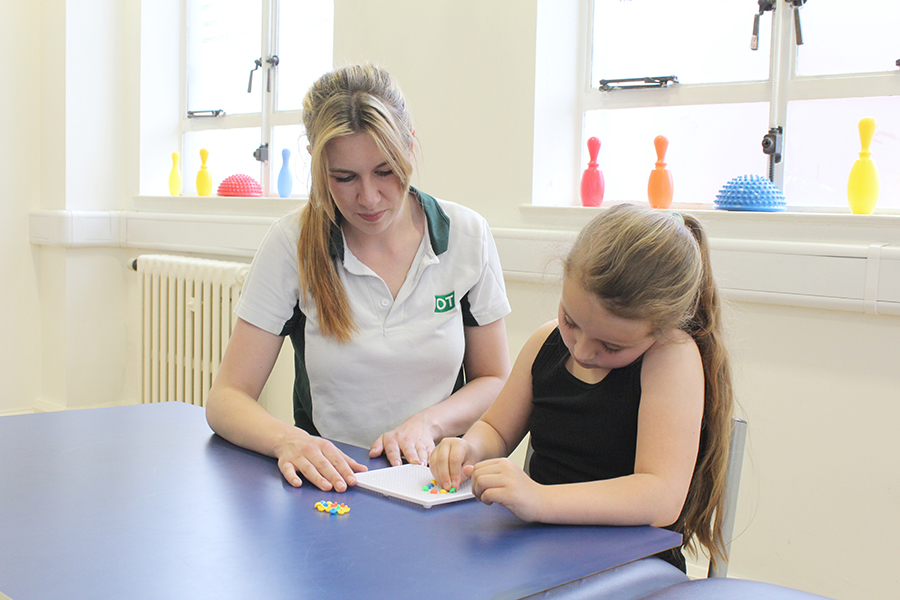Attention Deficit Hyperactivity Disorder (ADHD) is one of the most common mental disorders diagnosed in children and adolescents. It can be very challenging for those who suffer from it to complete everyday tasks. In some cases, occupational therapy may be recommended as a treatment option. In this blog post, we will discuss what occupational therapy is, how it can help those with ADHD, and some of the challenges that may be faced during treatment.
Contents
What Is Occupational Therapy For ADHD?

Occupational therapy is a form of treatment that helps patients with ADHD learn how to perform everyday tasks more effectively. This may include teaching them time management skills, organizational strategies, and how to better communicate with others. Occupational therapists also work on developing patients’ fine motor skills and improving their sensory processing abilities.
There are many benefits to occupational therapy for ADHD. It can help patients learn how to better manage their time and be more organized. It can also improve their communication skills and social interactions. Additionally, occupational therapy can help develop patients’ fine motor skills and improve their sensory processing abilities.
Occupational therapy for ADHD is an individualized form of treatment that is based on each patient’s unique needs. The therapist will work with the patient to develop a treatment plan that is specifically tailored to their abilities and goals.
If you or someone you know has ADHD, consider seeking out occupational therapy as a treatment option. It can be an extremely effective way to help patients manage their symptoms and improve their quality of life.
How Does Occupational Therapy Work For ADHD?
The working of occupational therapy for ADHD is not fully understood. However, it is believed that this type of therapy can help people with ADHD by teaching them how to better manage their time, improve their organizational skills, and learn how to better control their impulses.
These therapies work by helping people with ADHD to learn how to better cope with their symptoms. These coping mechanisms can help people with ADHD to function more effectively in their everyday lives.
Techniques of Occupational Therapy
One of the most important aspects of occupational therapy for ADHD is teaching people how to manage their time. People with ADHD often have difficulty managing their time and may find it hard to stick to a schedule. occupational therapists can teach people with ADHD how to better manage their time by using techniques such as time management tools, goal setting, and scheduling.
Another important aspect of occupational therapy for ADHD is helping people to improve their organizational skills. People with ADHD often have difficulty organizing their thoughts and materials. This can lead to problems such as losing things, forgetting appointments, and being late for work or school. occupational therapists can help people with ADHD improve their organizational skills by teaching them how to better organize their thoughts and materials.
Finally, occupational therapy for ADHD can also help people to better control their impulses. People with ADHD often have difficulty controlling their impulses and may act impulsively without thinking about the consequences. occupational therapists can help people with ADHD to learn how to better control their impulses by teaching them techniques such as self-control, delaying gratification, and mindful breathing.
Types of Occupational Therapy

For ADHD In Children
Many types of occupational therapy can be useful for children with ADHD. Here are some examples:
Activities that promote positive reinforcement: These activities help children learn to associate positive behaviors with positive outcomes. For example, a child might be rewarded with a sticker for completing a task.
Sensory integration: This type of therapy helps children who are over or under-sensitive to certain stimuli. For example, a child who is oversensitive to noise might benefit from using headphones during occupational therapy sessions.
Fine motor skills training: This type of therapy helps children improve their ability to control small muscles, such as those in the hands and fingers. Fine motor skills are important for tasks such as writing and using scissors. In therapy, children might practice these skills by doing activities such as stringing beads or cutting paper.
Gross motor skills training: This type of therapy helps children improve their ability to control large muscles, such as those in the legs and arms. Gross motor skills are important for tasks such as running and climbing. In therapy, children might practice these skills by doing activities such as kicking a ball or riding a tricycle.
Visual perceptual skills training: This type of therapy helps children improve their ability to interpret what they see. For example, a child might be asked to put puzzle pieces together to form a picture.
Cognitive skills training: This type of therapy helps children improve their thinking skills. For example, a child might be asked to remember a sequence of steps or to follow directions.
Social skills training: This type of therapy helps children learn how to interact with others. For example, a child might learn how to take turns or share toys. Social skills training can also help children learn how to read social cues, such as facial expressions and body language.
Which type of occupational therapy is right for a child with ADHD will depend on the individual child’s needs. A child’s occupational therapist will work with the child and his or her parents to create a personalized treatment plan.
For ADHD In Adults
There are many different types of occupational therapy for ADHD in adults. The type of therapy that is right for you will depend on your individual needs and goals.
Simulation Therapy
Simulation therapy is a type of occupational therapy that helps people learn new skills by simulating real-life situations. This type of therapy can be used to help people with ADHD learn how to manage their time, stay organized, and complete tasks.
Cognitive Behavioral Therapy
Cognitive behavioral therapy (CBT) is a type of psychotherapy that helps people change their thoughts and behaviors. CBT can be used to help people with ADHD learn how to control their impulsivity, manage their emotions, and improve their focus and concentration.
Exercise Therapy
Exercise therapy is a type of occupational therapy that uses physical activity to help people improve their physical and mental health. Also, Exercise can help people with ADHD reduce their symptoms, improve their mood, and increase their energy levels.
Tutoring
Tutoring is a type of occupational therapy that helps people learn new skills or improve their existing skills. Also, Tutoring can be used to help people with ADHD learn how to study, take tests, and complete assignments.
Coaching
Coaching is a type of occupational therapy that helps people set and reach their goals. Also, Coaching can be used to help people with ADHD set realistic goals, create action plans, and stay on track.
Support Groups
Support groups are a type of occupational therapy that provide emotional support and information to people with ADHD and their families. These Support groups can help people with ADHD cope with their symptoms, connect with others who have similar experiences, and find resources and information.
How To Select From Types of Occupational Therapy For ADHD?

There are many types of occupational therapy for ADHD. That’s why it is so important to consult with an occupational therapist to find the right type of therapy for your child. Here are some of the factors that make each type of therapy unique:
Focus of Therapy
Each type of therapy has a different focus. Some therapies are designed to improve fine motor skills, while others are geared toward helping kids with social skills or sensory processing issues. The needs of your child will help determine the type of therapy that’s right for him or her.
Therapy Goals
Each type of occupational therapy has different goals. Some therapies are designed to improve specific skills, while others are meant to help kids with a more general problem. The goals of therapy will be determined by the therapist, based on the needs of your child.
Approach to Therapy
Each type of occupational therapy has a different approach. Some therapies use games and activities to help kids learn new skills, while others use more traditional methods, such as worksheets and lectures. The approach that’s right for your child will depend on his or her learning style and needs.
Duration of Therapy
The length of therapy will vary, depending on the type of therapy. Some therapies are short-term, while others are long-term. The duration of therapy will be determined by the therapist, based on the needs of your child.
Location of Therapy
Occupational therapy can be done in a variety of locations, including in a clinic, in a school, or the home. The location of therapy will be determined by the therapist, based on the needs of your child.
Cost of Therapy
The cost of occupational therapy will vary, depending on the type of therapy and the location. Some therapies are covered by insurance, while others may require a co-pay or private pay. The cost of therapy will be determined by the therapist, based on the needs of your child.
Now that you know more about the different types of occupational therapy for ADHD, you can start to narrow down your options and find the right type of therapy for your child.
Conclusion
Occupational therapy can be vital in the management and treatment of ADHD. It helps children and adults with ADHD to develop the skills they need to live more productive, independent lives. Through activities that focus on improving fine motor skills, gross motor skills, sensory processing, and executive functioning, occupational therapists can help people with ADHD to better manage their symptoms and lead more successful lives.
While medication can be an important part of treatment for some people with ADHD, occupational therapy can provide long-term benefits that medication cannot. If you or someone you know has ADHD, consider talking to an occupational therapist about how they could help.
Hope this article was of help to you! If you are suffering from mental health disorders, you may seek help from Therapy Mantra. We have a team of highly trained and experienced therapists who can provide you with the tools and skills necessary for overcoming mental health disorders. Contact us today to schedule an online therapy or download our free Android or iOS app for more information.


